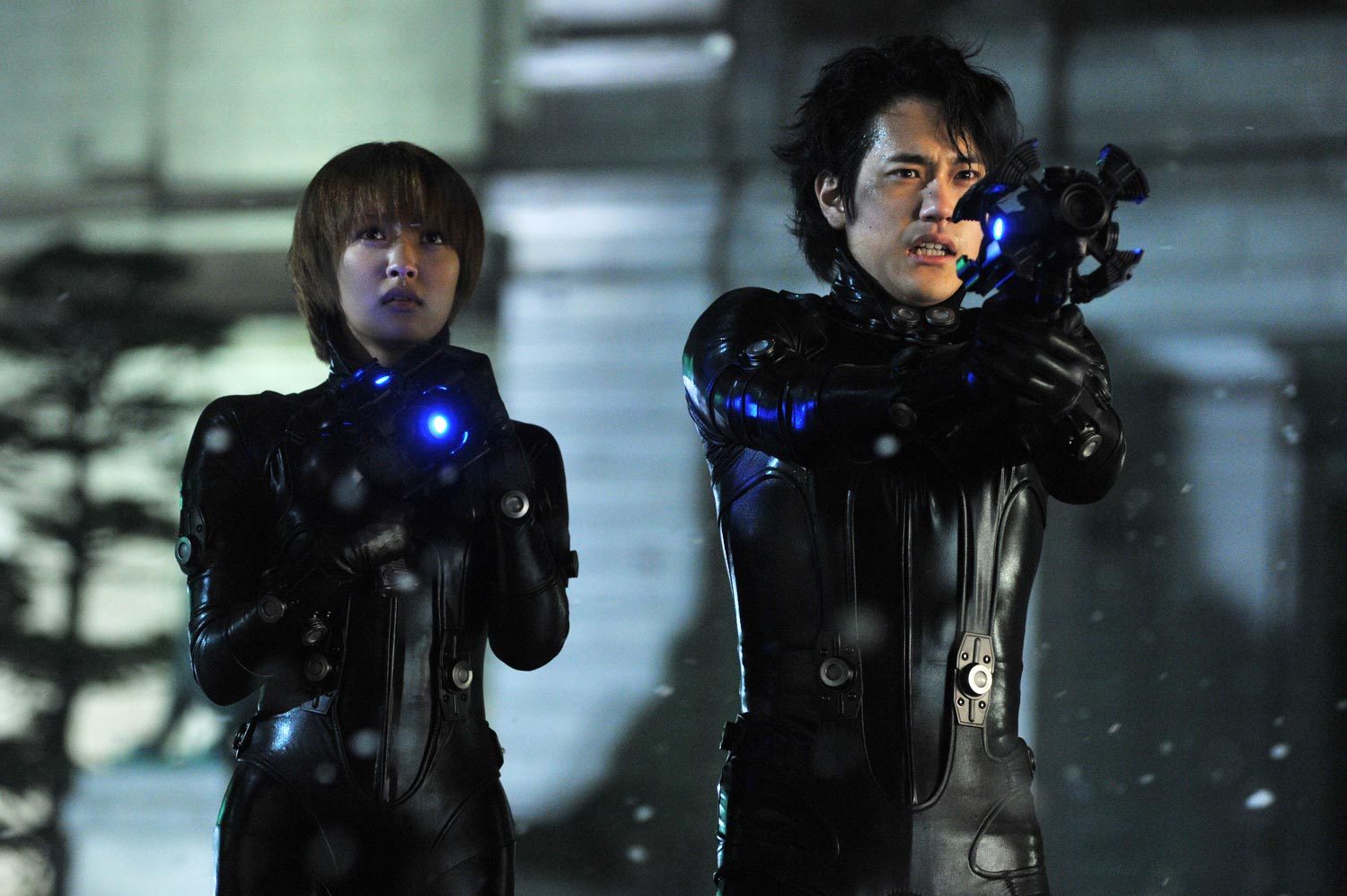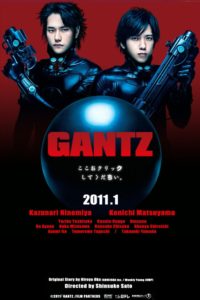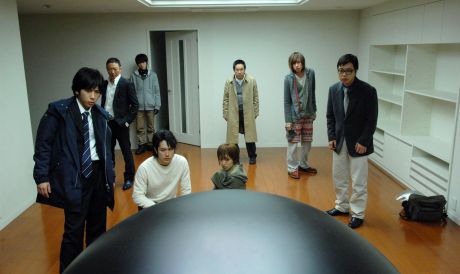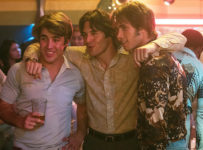[stextbox id=”grey” caption=”Gantz (2011)” float=”true” align=”right” width=”200″]
Director: Shinsuke Sato
Runtime: 130 minutes
Starring: Kazunari Ninomiya, Ken’ichi Matsuyama, Yuriko Yoshitaka, Kanata Hongo
Country: Japan
Rating: Highly Recommended (?)
[/stextbox]
Fans of Gantz will need little introduction to the incredibly popular franchise that has been running for over a decade in Japan. Hiroya Oku’s ongoing manga series first appeared back in 2000 in the pages of Weekly Young Jump, and to date has spawned over 350 individual chapters. In 2004, Gantz became an animated series in Japan, and ran for 26 episodes over two seasons, bringing all of the nudity and violence of the source material to life. When the first of two live action films was released in Japan in January this year, it made a little bit of history by debuting in the US with a simulcast across 46 states. When it was released in Japan a week later, it immediately topped the box office, and has become one of the big smashes of 2011 already.
After trying to save a man from being hit by a train, Kei Kurono (Kazunari Ninomiya, The Lady Shogun and Her Men) and Masuru Kato (Ken’ichi Matsuyama, Norwegian Wood) look hopelessly on as an oncoming train heads towards them. Moments later, they find themselves in a room with a mysterious black sphere and an eclectic group of people. With everybody including themselves seemingly dead, they soon find that they are involved in an extreme game, with instructions issued by the sphere known as “GANTZ”. GANTZ sends them on missions to exterminate aliens that are living amongst the humans, with the survivors earning points to aid them in getting out of the purgatory-like existence. However, if they should perish on the missions, then they lose their lives permanently.
Gantz is an instantly accessible and incredibly cool combination of Cube, Men in Black, The Running Man and The Matrix. Although all of the elements to this very straightforward actioner will be wholly familiar to audiences, the overall production is slick, beautifully designed and so fast-paced that you won’t have time to stop and pick the references. The impeccably detailed world is immersive and intriguing, with the production design almost a secondary mystery to be unraveled. From the costumes that the characters are given to the hi-tech weaponry, one gets the immediate impression that everything on screen has a function, even if we don’t know what it is yet. As we have the same level of knowledge as the protagonists, there is quite literally a surprise around every corner.
The special effects are also some of the most impressive seen in a Japanese film in recent years. For the most part, they are underplayed, with cool TRON-style flashing lights and latex never distracting us from the fact that every bit of the 4 billion Yen (US $45 million) budget went into the special effects and stunts. The first instance where a character dematerialises between one plane of existence and the next is wow-worthy, and the creatures and fighting effects are well realised. It’s trite but true to say that the manga quite literally comes to life. Balancing these sci-fi effect elements is a terrific use of location as well, such as the climactic fight sequence that takes place in the iconic Ueno Park in the heart of Tokyo. As giant statues animate to battle our heroes, the blend of fantasy and reality is seamless, and even though plot becomes secondary to the fight, it is a magnificent spectacle to behold.
The casting of heartthrobs Kazunari Ninomiya and Ken’ichi Matsuyama may have been strategic, but they are both capable leads who carry much of the considerable weight of the film on their shoulders. The character development is slender, but the few quiet reflective moments that take place in the “real world” speak volumes. The bond between these their two characters in particular is a strong one, and serves a line through the middle of the saga. By the time this first film finishes, there is a very clear indication of where the sequel will be headed, and is something that is telegraphed fairly early in their relationship.
Much of Gantz is building towards the sequel, Gantz: Perfect Answer, and on this level this film may come to a wholly unsatisfying conclusion by itself. It has also been criticised for not giving the amount of character detail that readers had come to expect from the manga. However, it would be unfair to judge Gantz solely on its own narrative, as it is effectively only half of the story, just as was the case with Toho’s 20th Century Boys a few years ago. In a film such as this, it isn’t so much the destination as the journey, and Gantz is one hell of a ride.
[stextbox id=”custom”]Gantz creates a vibrant and intriguing world, and is slick, beautifully designed and fast-paced. Lovers of action and sci-fi alike will find much to like in this first chapter of the Gantz saga.[/stextbox]
Gantz is playing at the Japanese Film Festival on 19 November (Sydney) and 2 December (Melbourne) 2011 at the 15th Japanese Film Festival in Australia. It will be available on DVD and Blu-ray in Australia from Madman on 14 December 2011.







